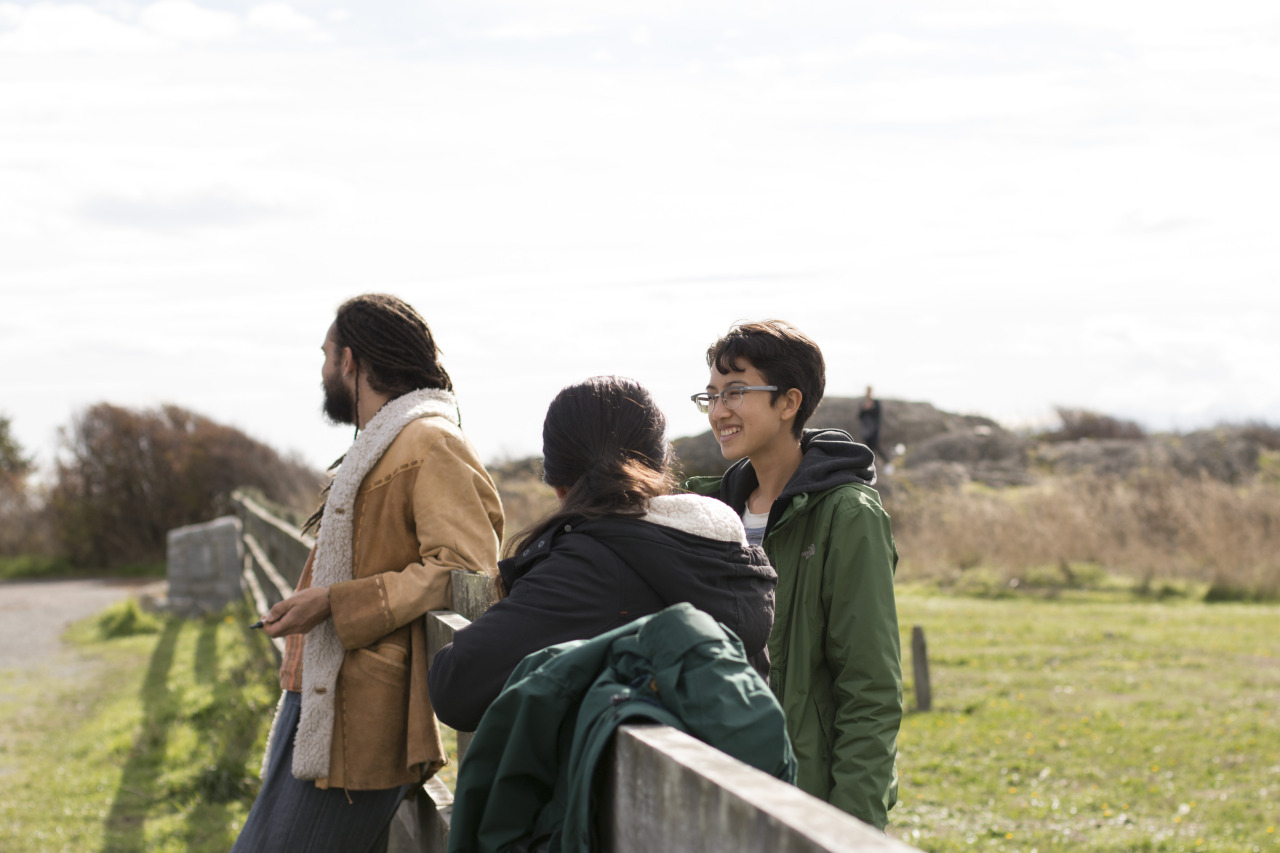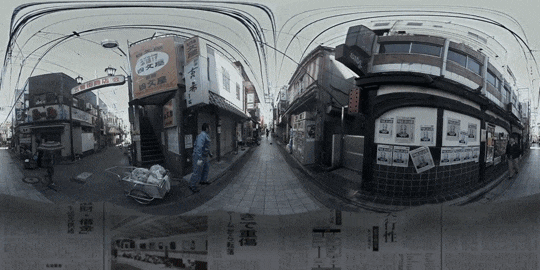
This gallery contains 2 photos.
Photographs by Bradley Seabrook

Knot for Sale has been an interesting project for me to watch from the outside. I was unable to attend filming due to a medical emergency, but have been able to touch up this blog (in a not very timely manner). As someone who’s never been apart of making a film, watching one come together is one of the most intriguing things of my degree so far. To see so many different people coming together to push deadlines and work with individuals they might know outside of class — it was fun! During class, shooting ideas around and seeing how people reacted to them; did the class murmur with dread, stay silent hoping someone else would pounce in on the idea, or get excited about what was said? For me, I wish I could have set more deadlines for myself. I got…

This gallery contains 3 photos.
prostheticknowledge: Find The Truth Short one-take 360 video for a Japanese TV show released last month is great introduction to what the format can do for storytelling. If you haven’t tried YouTube 360 video before, all you need is the latest iOS / Android YouTube app installed. Instead of seeing everything like in the examples above, the view will be based on the physical position of the screen, so look around. Click on this link here to open the video through the app on your device The Newspaper Bandit has been spotted in the backstreets of Nakano!Can you put together the clues hidden in this 360° immersive movie?
By Holly Lam, University of Victoria Maybe thinking about 360 in relation to flatties, and producing 360 films that go with flatties, limits the medium. Maybe rethinking the creative process and artistic framework entirely would exploit this new medium more fully. But VR add-ons, let’s call them, have the power to attract viewers with brand recognition, create pre-emptive enthusiasm in the audience, and get a reaction. That’s why we create stories. Before this year, I’d never watched a 360 film. I was skeptical. I dutifully downloaded the 360 VR app Within, got my Google Cardboard viewer and began searching for films. I tried a few documentaries, and found the viewer frustrating, as the two images wouldn’t line up and I had to close one eye to see properly. After an hour I started to feel ill. On the whole, the experience was far from immersive: I was constantly aware of…
By Scott Secco, University of Victoria Compared to arts like writing and music, film, at 121 years old, is still in its infancy. The first true motion picture was Sortie de l’usine Lumière de Lyon created in 1895 by French filmmaker Louis Lumière. It was shot statically, on a tripod. Camera movement was pioneered in 1898 with a panning device which could rotate the camera. In 1917 Technicolour introduced mainstream audiences to colour (colour film was first tested in 1902 but it wasn’t popularized until Technicolour’s vivid film stock caught on with audiences and directors). Incredibly, the first 3D movie was Power of Love way back in 1922. Sound was added to films in 1927. Wearable virtual reality (primitive, but recognizable) as we know it was created in 1968. These innovations have all been landmark moments in cinema history to varying degrees: the highest grossing picture of all-time is a…
By Sara Bayat, University of Victoria As a somewhat recent innovation, 360° films are still new territory in terms of production concepts. Given the fact that the camera (or six cameras, to be more accurate) is shooting in the round, there’s little editing that can be done beyond special effects or splicing scenes together, and so the majority of the finished product must be shaped on set rather than in post-production. Simply, the footage cannot be manipulated as readily as it is in the world of conventional—a.k.a. ‘flattie’—filmmaking, and this presents challenges on multiple levels. Take, for example, the extremely low-budget short film, My McGuffin (available in all its glory here: https://www.youtube.com/watch?v=3lsa-8HhBqE), in which a man stumbles upon this newfangled 360° camera in the middle of a public square, claims it for his own, and trouble then ensues. I suggest that you watch the four-minute video before reading further, as I’m…
By Morgan Buxton for WRIT 420 Note: Sources are hyperlinked* As an adrenaline junkie, I am particularly drawn to horror films. In fact, the first thing that I did after receiving my Habor VR headset in the mail was download an app called “VR Terror 360” to my phone. From there, I spent close to two hours walking into walls and annoying my roommates by shrieking every time something startled me—walking into a monster in your living room is far freakier than having him jump out at you from your television screen. Here is what I learned from my first VR 360 experience: It’s not that bad. Virtual reality has significantly altered the classic framework of filmmaking. As a writer, this got me thinking. Virtual reality films don’t only alter the way we write movies, they alter the way we watch them. In a two-dimensional world,…